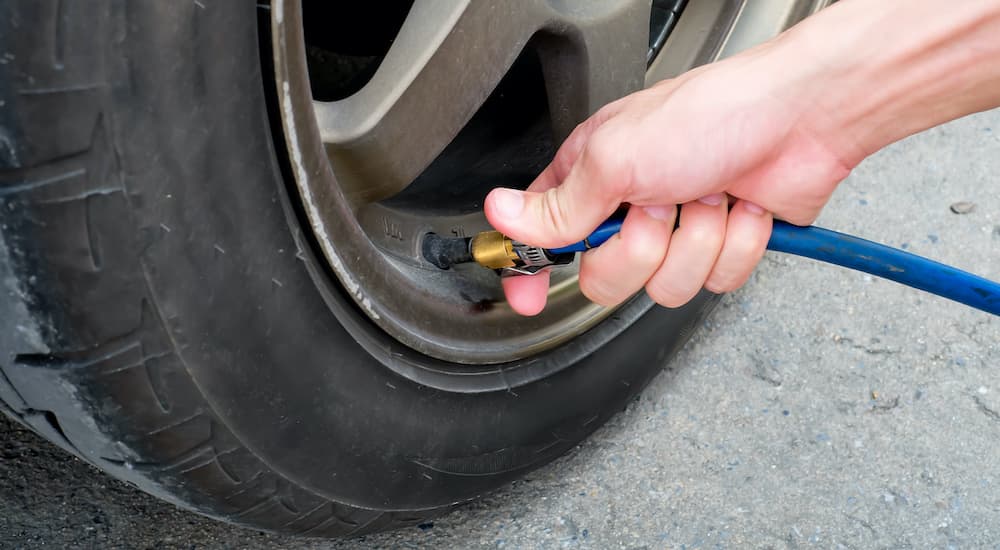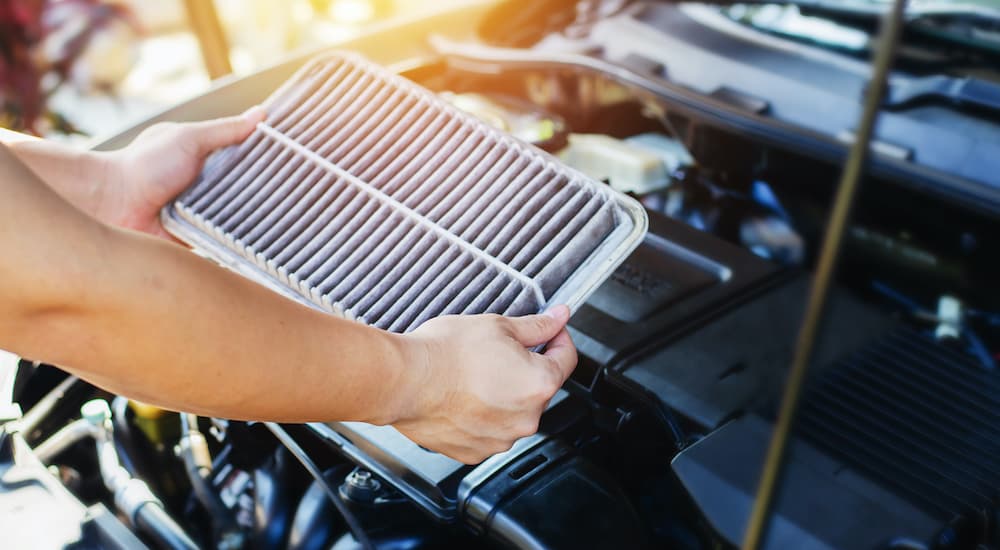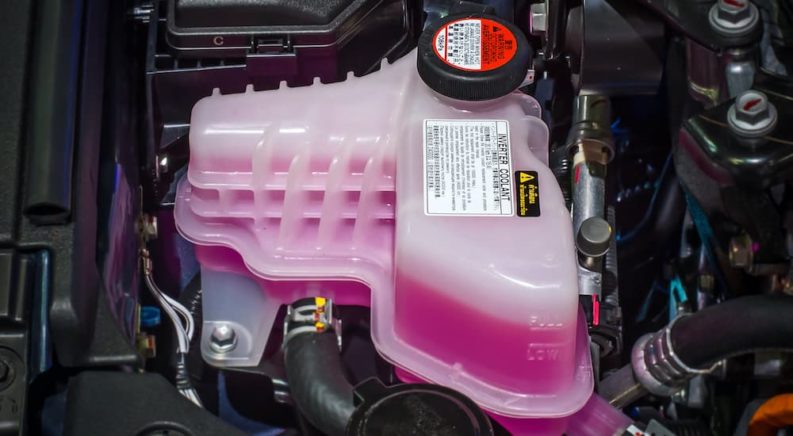Car maintenance can seem daunting for anyone who isn’t familiar with rummaging around the engine under the hood – even more so when a jack is required, and you have to scoot beneath several thousand pounds of metal, rubber, and plastic. But it doesn’t have to be that way. Not every vehicle out there is designed to be a maze of complex components that only mechanical wizards possessing arcane knowledge can fix. In fact, there are a lot of common tactics you can use and easy maintenance steps you can do yourself that don’t require lots of heavy machinery or a degree in engineering to complete, especially when you pick up an older model at a used car dealership.
If you bought a vehicle (or are scouting for a vehicle) from used car dealerships and you want to save a few coins on service maintenance, there are some simple processes you can employ. For instance, there are some components you can replace or swap out with nothing more than a couple of hand tools, as well as some maintenance that simply requires a bit of patience and a willingness to get your hands dirty. So we’re going to talk about some of the easy maintenance you can do yourself, especially if you own a used vehicle.
Easy Maintenance You Can Do Without Doing Any Work
Believe it or not, you can actually carry out some maintenance work for your vehicle without actually doing any work. That’s right; there are maintenance steps to check and inspect your vehicle where you don’t need goggles, a wrench, a screwdriver, or even gloves. This is maintenance work anyone can do at any time for their vehicle. If you’re planning on buying used, or have recently purchased a used vehicle, these steps are perfect for you even if you have zero mechanical skills.
Checking the Coolant Level
One of the easiest things you can do is to check the coolant level. All you have to do is pop the hood of your car, truck, or SUV and make sure you have enough coolant in the tank. You should be able to find the coolant reservoir near the front of the engine bay, next to the radiator. It should be a large clear tank and should have markings visible on the sides indicating when it’s full and when it’s low. Make sure the coolant isn’t filled with particulate matter or any kind of debris; otherwise it could cause problems.
Checking the Windshield Wiper Fluid
This is a pretty easy thing to check. Pop open the hood and look for a reservoir with a windshield wiper symbol on the cap. Once you find it, you can open it up and peer inside to see how much fluid is available. Typically windshield fluid reservoirs are tucked into the corners of the bay, and so it can sometimes be difficult to see where on the reservoir the fluid is. However, if you notice that there is no fluid available inside the canister and no fluid comes out to clean the windshield, then you can top off the windshield wiper fluid by adding more to the vehicle. Be sure to add the proper fluid to the reservoir, as the wrong kind of liquid or improper fluid can freeze or cause damage to the windshield.
Checking the Turn Signals
This is another simple one to check, especially if you purchased a used vehicle. You want to make sure all the electrical wiring is correct and that there are no shorts when it comes to the blinkers, the taillights, and the headlights. While the car is parked, simply turn on the vehicle and make sure that the lights work as intended. This includes the hazard lights, the turn signals, the fog lights (if it has any), the high beams, as well as the taillights and the headlights. This is an easy task to complete that doesn’t even require popping open the hood, although it is a lot easier if you have someone to help you.

Easy Maintenance That Doesn’t Require A Lot Of Work
Some easy maintenance tasks are a little more complex than simply opening doors, popping the hood, turning on the ignition, or looking at lights. Some tasks will require a little more nit and grit to ensure that the vehicle is running properly. You may need a couple of tools for some of these tasks, but they’re still fairly easy to carry out, even if you’re not tech-savvy.
Checking the Tire Pressure
While walking around the car and kicking the tires seems like it might be a good strategy to get a perspective on the pressure of your current set of tires, it’s not the most reliable method. During different times of the year, the pressure of the tire may change, along with the wear and tear on the rubber. That’s why it’s important to check the tire pressure every few thousand miles. If your vehicle doesn’t come with an automatic tire pressure monitor, you will need a tire pressure gauge for this task, so it’s not completely tool-free. You want to make sure that the tire pressure is at the proper PSI based on what’s indicated in the owner’s manual. If you bought a used vehicle and don’t have an owner’s manual, you can find the recommended PSI for the tires on the sticker typically located on the driver’s side door jamb.
Checking the Brake Fluid
Much like the coolant, you can also check your brake fluid without getting too messy. The fluid systems are usually located out of the way of the engine block itself, usually on the side or in the corner of the bay. You can find the small canister with liquid inside. You may not have to take the cap off to see what the brake fluid levels are, but in some cases, you may have to if you can’t see it from the outside. Simply remove the cap and peer inside. If the fluid is down to the markings that indicate it’s at the minimum, then you may need to add more. Some brake fluid caps may require an additional tool to get off, such as a screwdriver, especially if they have a clamp. So depending on how old the vehicle is and the make and model, it’s something to consider.
Checking the Engine Oil
You will need a rag for this task. Many newer vehicles have an oil monitor that will let you know when the vehicle needs more oil. However, you can manually check your oil by simply opening up the hood and finding the oil dipstick on the engine. These sticks are usually brightly colored so that you know what to look for. On older vehicles, you may have an oil symbol on the cap. Simply pull the dipstick out and clean it off with a rag. Place the dipstick back into the chamber and wait a few seconds before pulling it out again to see where the oil level is based on markings at the end of the dipstick. If it looks like it’s low, then you can add more oil – just make sure to use the right type for your engine.

Checking the Air Filter
Air filters are very important components to keeping the engine clean and are also usually fairly easy to replace as well. Most air filters are fairly accessible within the engine bay; always be sure to check your owner’s manual if you’re unsure. If you purchased your vehicle from used car dealerships and the owner’s manual was not included, you can have the mechanic show you where the air filter is the next time you bring it in for regularly scheduled maintenance. Typically you’ll want to check the filter every several thousand miles. You should usually find it in a housing, which may be clamped in place or screwed in place. If it has screws, then you’ll need a screwdriver to unfasten the housing to get to the filter. Check to see if the filter is filled with dirt, dust, grime, or other particulate matter; you can run your hand across the folded media to tell how dirty it is. If dirt and other debris fall out of the filter, it’s time to replace it. If the filter has become completely discolored due to grime, it’s also time to replace it.
Consult With Your Owner’s Manual or Dealer Before Doing Any Major Work
These are just a few tips you can use to check the condition of a used vehicle. If you need more serious work done, then it’s important to consult with the owner’s manual to see if there’s anything you need to check first. If you know for sure that mechanical work is needed for damaged or inoperable components, then it’s time to head to a mechanic to have the proper work done. For all of the little tasks, especially checking to make sure the vehicle’s core components are operating as intended, simply follow the steps above at regular intervals, typically every several thousand miles or during a change in season. It should help keep you aware of any minor issues the vehicle may incur in between regularly scheduled checkups.

